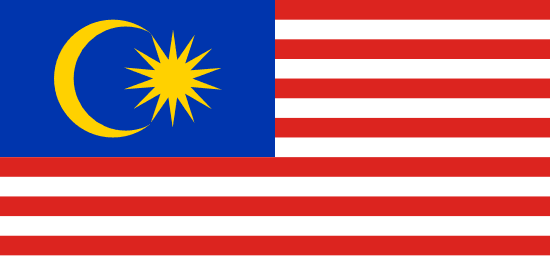"Kuala Lumpur, Kita Punya | Kuala Lumpur, Our City"
About:
Kuala Lumpur, Malaysia's capital, was founded in 1857 as a tin mining outpost. It became a city in 1972 and has since experienced rapid growth, transforming into a bustling metropolis. Its iconic landmarks, such as the Petronas Twin Towers, reflect its modernization. Despite its development, Kuala Lumpur retains elements of its colonial past and diverse cultural heritage, seen in its architecture and cultural spaces. Today, it's a significant global city and economic hub in Southeast Asia.
When to visit:
Kuala Lumpur, the bustling capital of Malaysia, experiences a tropical rainforest climate characterized by high humidity and temperatures that remain fairly consistent throughout the year. The best time to visit Kuala Lumpur for a holiday is during the dry season, which typically occurs from June to August and December to February. During these months, visitors can expect less rainfall and more sunshine, making it ideal for outdoor activities and sightseeing. It is important to note that Kuala Lumpur can also be visited year-round, with its vibrant culture, delicious cuisine, and iconic landmarks offering something for every traveler to enjoy.
When to avoid:
Traveling to Kuala Lumpur during the monsoon season, which typically occurs from March to April and September to November, is considered the worst time to visit the city on a holiday. During this period, heavy rainfall and thunderstorms are common, leading to potential travel disruptions and outdoor activity limitations. The increased humidity and wet conditions may also hinder sightseeing opportunities and exploration of outdoor attractions. It is advisable to plan your trip to Kuala Lumpur during the drier months of December to February or May to August to avoid the challenges posed by the monsoon season.
Monsoon Season (Nov–Mar)
In Kuala Lumpur, the wettest portion of the year is from March to April and September to November. These periods are characterized by heavy rainfall due to the monsoon seasons, with an average rainfall of 200-250mm per month. Despite the rain, temperatures remain warm, averaging around 27-32°C. Sunlight is less predictable, with cloud cover often obscuring the sky. An average day for a visitor during these periods would involve intermittent heavy showers, usually in the afternoon or evening, with mornings generally remaining dry. Despite the wet conditions, the city's vibrant life continues apace.
"Hot Season (March–September)"
In Kuala Lumpur, the warmest part of the year typically spans from March to September, with the peak temperature usually occurring in April and May. During this period, average high temperatures range from 31 to 33 degrees Celsius (88 - 91 degrees Fahrenheit), while the average lows hover around 23 to 25 degrees Celsius (73 - 77 degrees Fahrenheit).
Rainfall is relatively high throughout the year due to Kuala Lumpur's tropical rainforest climate, but the warmest months tend to be slightly drier with rainfall averaging around 150-200mm per month. However, sudden tropical showers are common, so it's wise to carry an umbrella.
Sunlight is fairly consistent year-round with Kuala Lumpur experiencing an average of 6 to 8 hours of daylight per day. However, the city's equatorial location means it does not see significant variation in daylight hours throughout the year.
Humidity is high during these warm months, often exceeding 80%. This can make the heat feel more intense, so it's important to stay hydrated.
As for cloudiness, the city experiences partly cloudy to overcast conditions most of the time due to its tropical climate. Clear skies are rare, but the clouds can provide a respite from the intense sunlight.
For a visitor, a typical day in Kuala Lumpur during the warmest part of the year would feel hot and humid, with a likelihood of afternoon showers. Despite the heat, the city bustles with energy, and the warmth makes it a great time to explore indoor attractions like shopping malls, museums, and food courts. Outdoor explorations are also possible, but it's advised to wear light clothing, use sunscreen, and stay hydrated.
Language:
In Kuala Lumpur, the capital city of Malaysia, the most commonly spoken language is Bahasa Malaysia, or Malaysian. English is also widely spoken due to the city's colonial history and its status as a global business hub. Other languages spoken include various Chinese dialects, particularly Cantonese and Mandarin, as well as Tamil, reflecting the city's multicultural population.




